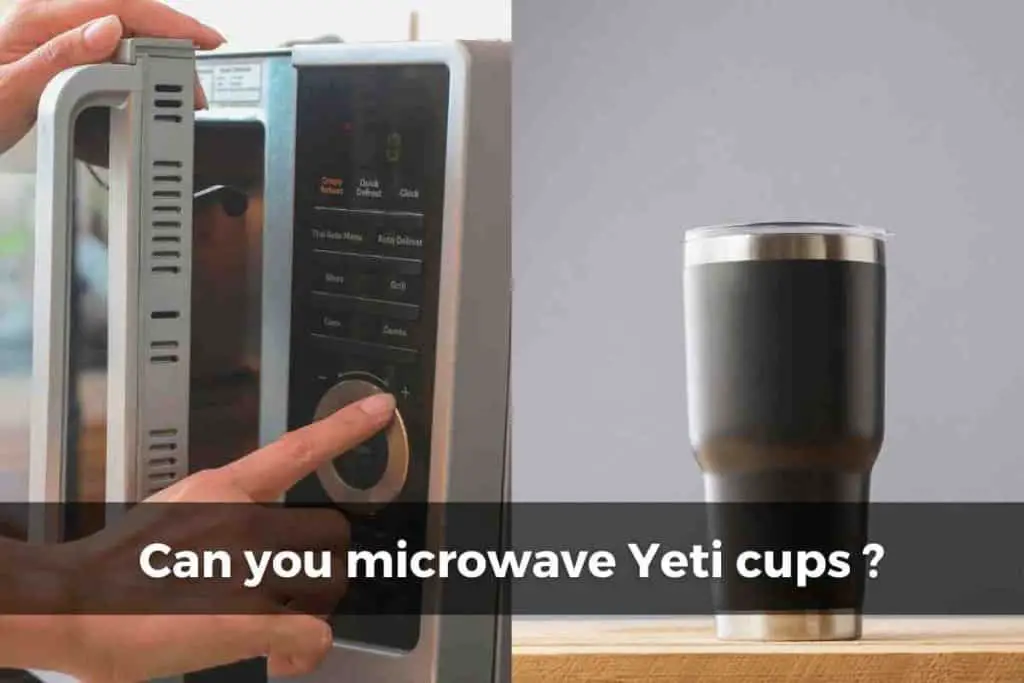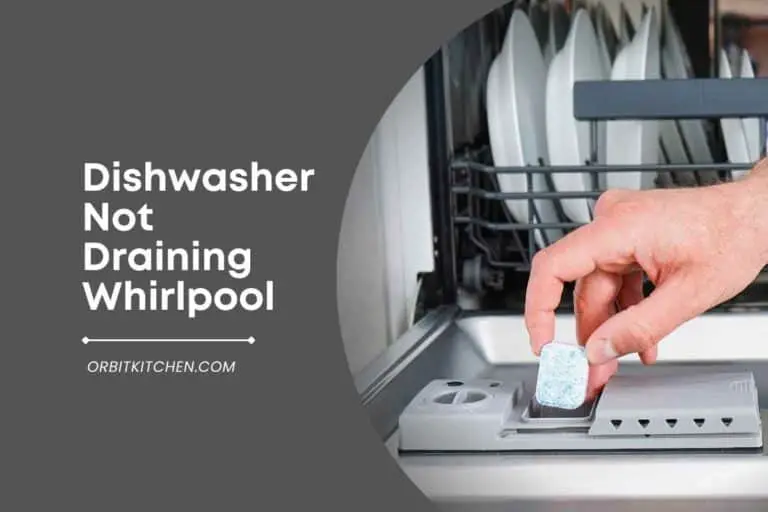Is It Safe To Microwave Yeti Cups?
We live in a rapid world where every second counts. To accommodate the fast-paced living, manufacturers introduced yeti cups to keep the liquids warm or cold. However, there are times you take a few sips and place the cup aside. It cools down the drink, and now you wonder what to do.
Is it safe to microwave Yeti cups?
The Yeti cups are not safe to use in the microwave. Stainless steel is the primary component in Yeti cups, which is not recommended for use in the microwave. Yeti cups are insulated with very high claims for their long-term use. The manufacturer advertises the yeti cups will hold the drinks cold or warm twice as long as plastic alternatives.
A Yeti cup is a vessel that maintains the drinking temperature so you can enjoy hot and cold beverages. Continue reading to discover the in-depth answer about yeti cups, reheating liquids, what happens when you microwave the Yeti and do microwave Yeti is bad for your health.

If you are interested in checking out the best yeti cups, you can find them on Amazon by clicking here.
Can You Microwave Yeti Cups?
A Yeti cup is manufactured with stainless steel and a plastic head. The metal, such as aluminum or stainless steel, will reflect the waves generated by the microwave. It is the vibrations caused by the waves that heat the food. Therefore, microwaves work overtime to produce vibrations faster when the waves are reflected and cause the appliance to overheat.
Though the microwave will not melt the Yeti cup since the molecules are jammed together, the same can’t be said of other metals. Furthermore, the Yeti’s odd shape will reflect the waves at a higher rate. Resultantly, it increases the probability of microwave fires. Another circumstance will cause the Yeti to burn when microwaving it with a lid.
The intense insulation blocks the waves from entering the liquid inside. Thus, the drink remains at the same temperature as before. The manufacturer recommends not microwaving metal-based cups. You can learn more about their attributes by visiting their website or reading the label at the bottom of the cups.

If you are interested in this YETI Rambler Mug, feel free to check it on Amazon here.
What Happens When You Microwave the Yeti?
Placing the Yeti cup in the microwave will build an increased amount of heat. If the cup is left inside the microwave, it can even lead to sparks, fire, smoke, and high-intensity flames inside the microwave. Therefore, putting a yeti inside the microwave and unadvised and very dangerous.
Furthermore, the internal heating process will not heat the liquid or the substance inside the Yeti. The cup will not transfer the energy produced by the microwave because of its stainless steel composition. As a result, if the microwave waves cannot reach the substance inside the cup, it will not heat up.
We strictly advise against placing anything Yeti-cup-like or the original product inside the microwave. Why go through the trouble for a room temperature liquid that you can quickly heat on the stove? It’s all fun and games until the appliance blows up with flames and sparks flying out. The action is not worth taking the risk. Therefore, you must keep any metal away from the microwave.
Learn more! Check out our article on How Long Does Dry Ice Last in a Yeti?
Are Yeti Tumblers Microwave Safe?
In a gist, yeti tumblers are not safe, and here is why. All yeti drinking vessels, such as tumblers, cups, and jugs, are made from 18/8 high-quality, industrial-grade steel. As we all know, steel is a conductive metal such as aluminum. Therefore, the conductive properties work against the radiation properties in the microwave.
The microwave uses concentrated bursts of energy to heat the food. The energy must pass through the object to reach food or liquid inside the container, and this is done through organic wavelengths present in the molecules. The longer an object stays in the microwave oven, the intensified the vibrations.
Resultantly, the intense and fast vibrations produce friction. As a result, heat is produced from kinetic energy. Unfortunately, stainless does not allow these vibrations to pass through. Instead of passing through the heat, it results in spanks and popping sounds you usually hear. Objects made from plastic are insulated, which means they will let the heat pass through.

If you like this Tumbler Yeti Cup, you could find more details about it from Amazon here.
Does a Yeti Catch on Fire in the Microwave?
A Yeti cup is very rare to catch on fire during the initial rounds of microwaving. However, if you leave it in the microwave for too long, the chances of seeing fire increase exponentially. Even microwaving a Yeti for a single minute will minimally heat the liquid.
However, suppose you put a vessel made from any other material for a minute in the microwave. In that case, it will heat up just fine. The molecular structure allows the heat to pass through quite easily. Furthermore, heating drinks and food in regular containers means little or no fire risk. It will also carry less risk of tampering with the vessel.
Some Yeti customers microwave their cups, but the results are less than ideal. Fortunately, the cup did not catch on fire, but neither did the liquid warm up. Therefore, it is best to microwave liquids in a microwave-friendly vessel then transfer them into a yeti cup.
Learn more! See our article Are Mason Jars Microwave Safe
Is Microwaving Yeti Bad for Your Health?
A yeti can be a home to a few unfortunate molds which can grow in a suitable condition—the heat from the microwave oven. These molds produce mycotoxins that are harmful to human health. Regardless of the brand or the name, it is common for tumblers with a removable lid.
It is probably growing mold inside if you experience an odd smell coming out of the Yeti cups. Molds grow in dark unwashed places if the yeti cups have not been used for a very long time. The damp areas with the aggravated heat from the microwave will ensure mold growth.
Yeti’s composition does not contain nickel. However, nickel is known to cause nasal cancer over time. However, the side effects are mainly found in exposed nickel and 18/8 stainless steelworkers.
If you encounter any of the above unfortunate circumstances, it is time to contact Yeti customer support. The manufacturer offers easy return policies with a three-year warranty. Securely package the broken Yeti cup and return it to the label address.
Conclusion
Yeti cups will maintain the internal temperature, but they are not the best for reheating. Therefore, act against every instinct to microwave a yeti cup. It will damage the vessel, the medium, and your drinking experience. The wisest strategy is to make sure the liquid is at an ideal temperature at the initial pour for the next few hours.
If you are interested in the best kitchen products and accessories, be sure to visit my Recommended Products Page (click to see my page), Which includes all of my top picks by category.






